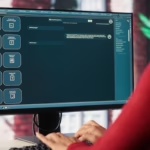Choosing the right Learning Management System (LMS) is a significant decision for any educational institution or NGO. With so many platforms available, each offering a universe of features and pricing models, it’s easy to get overwhelmed. This guide provides a clear, step-by-step process to help you navigate the selection process and find a platform that truly fits your unique needs.
Whether you’re running online courses for students, managing training programs for your team, or delivering digital learning to beneficiaries, the right LMS can help you provide a better educational experience, both efficiently and effectively.
Phase 1: Define Your Strategy Before You Look at Tools
The most common mistake is jumping straight into comparing features of popular platforms. The best process starts with a deep look at your own organization’s needs and goals. Before you even open a browser tab, sit down with your team and clarify your core objectives.
- What is your primary goal? Are you looking to host self-paced courses rich with videos and quizzes, or do you need robust tools for live, interactive sessions?
- Who are your learners? Will they access content primarily on desktops, or is a mobile-first experience essential?
- What are your administrative needs? Do you need to manage formal certification programs, track detailed compliance, or simply organize content for a small group?
Defining these goals will prevent you from being dazzled by flashy features you’ll never use and ensure you’re focused on what truly matters.
Phase 2: Evaluate Platforms Against Your Core Criteria
Once your strategy is clear, you can begin exploring the market. Use the following criteria as your evaluation checklist when comparing different LMS options.
- User-Friendliness: Is the platform intuitive for both learners and administrators? If teachers, students, or team members can’t figure out how to use it easily, adoption will fail. Look for clean interfaces and simple navigation.
- Scalability: A good LMS should grow with you. It might serve 100 users today, but can it handle 1,000 or even 10,000 in the future without a massive price hike or performance issues?
- Support and Training: What happens when something goes wrong? Check if the LMS provider offers reliable technical support, helpful onboarding assistance, and comprehensive training resources for your team.
- Transparent Pricing: How much does it really cost? Some platforms offer free tiers or significant discounts for nonprofits and educational institutions. Always dig deeper to understand the full pricing structure, including any hidden fees for add-ons, extra users, or advanced analytics.
- Integrations: Your LMS should not be an isolated island. Ensure it can connect smoothly with the tools you already rely on, such as Google Workspace, Zoom, Salesforce, or other content repositories.
- Data and Reporting: Can you measure success? Look for clear, useful dashboards that show how users are engaging with content, track their progress over time, and provide insights to help you improve your courses.
Phase 3: Research the Market and Identify Red Flags
With your criteria in hand, you can start creating a shortlist. Here are some popular platforms often used in the education and nonprofit sectors to begin your research: Moodle, Google Classroom, Canvas, TalentLMS, and EdApp. Each has its own strengths, so trying out demos is essential.
As you explore, be vigilant for common warning signs that could lead to future frustration:
- An outdated or clunky user interface.
- A complex course setup process that requires technical expertise.
- Poor or non-existent mobile optimization.
- A lack of positive reviews or case studies from similar organizations.
- Vague information about customer support options.
Making a Strategic, People-First Choice
The final step involves creating a shortlist of two or three platforms and scheduling live demos. Crucially, involve the people who will actually use the system every day—your educators, administrators, and even a few learners—in this testing phase. Their feedback is more valuable than any marketing brochure.
Ultimately, choosing an LMS is not just a software purchase; it’s an investment in your organization’s educational infrastructure. The best system isn’t necessarily the one with the most features or the biggest name. It’s the one that aligns with your mission, works for your users, and empowers your learners to succeed. Think of your LMS provider as a long-term partner. Their ability to support you as you grow is just as important as the platform’s features today.
This decision can feel daunting, which is why seeking expert guidance can be invaluable. If you need help navigating your options and aligning them with your budget and mission, consider reaching out to our team at FutureCode for a free consultation. A trusted partner can help ensure the platform you choose is one that serves your community and supports your goals for years to come.







